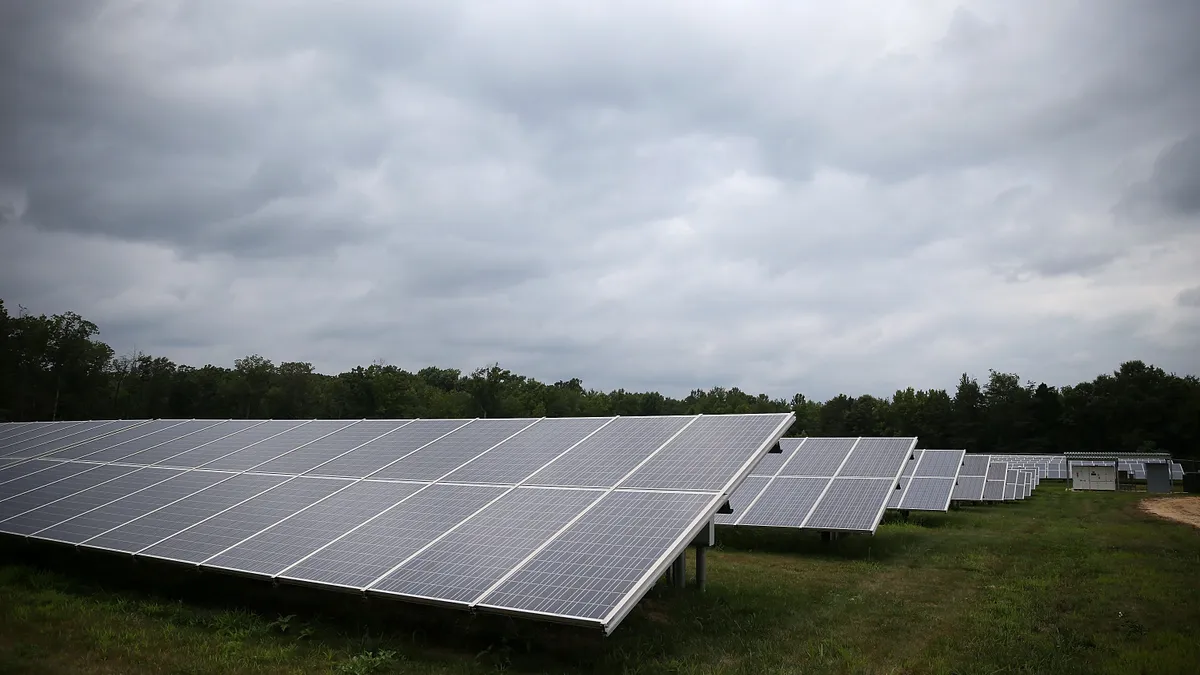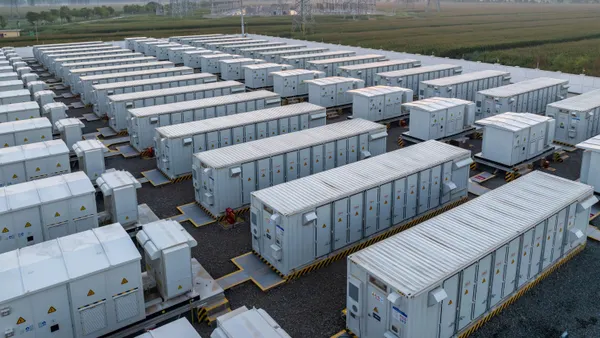Dive Brief:
- Maryland is aiming to have a carbon-neutral economy by 2045 under its Climate Solutions Now Act of 2022, enacted earlier this month. The law also requires an unprecedented 60% reduction in economy-wide greenhouse gas emissions by 2031, a significant increase from the state's earlier 40% reduction target below 2006 levels.
- The law provides funding and oversight to help reduce pollution in overburdened communities, aligning it with the Biden administration's initiative to provide disadvantaged communities a healthy share of clean energy's benefits — from less pollution to more jobs. The Maryland law also seeks to replace jobs lost in the fossil fuel industry caused by the move to zero-emission energy, buildings and transportation.
- Clean energy and environmental equity advocates touted the law and called on other states to follow Maryland's lead.
Dive Insight:
Maryland joins a small number of states that have enacted laws to attain net-zero carbon emission economies by midcentury. But Maryland's new law goes farther on the climate pollution front by seeking to slash emissions 60% below 2006 levels by 2031.
California, which also has a 2045 deadline to achieve a carbon-neutral economy, aims for economy-wide carbon emission reductions that are 40% below 1990 levels by 2030. Maine, which has a 2045 goal for reaching a net-zero emissions economy, strives to cut economy-wide greenhouse gases 45% below 1990 levels by 2030.
State legislatures across the U.S. should look to Maryland "as a model for legislative action that meets the moment and puts us on track for a sustainable, equitable future," Gregory Wetstone, American Council on Renewable Energy president and CEO, said in a statement last week.
Clean energy and environmental justice advocates similarly praised the new law.
"There is so much in the bill that is ambitious and a big deal, and also reasonable and achievable," Rebecca Rehr, Maryland League of Conservation Voters director of climate policy and justice, said.
She applauded the environmental justice provisions, including those that comply with the Biden administration's Justice 40 Initiative to provide 40% of the benefits of non-fossil energy to communities disproportionately impacted and historically disinvested.
The bill requires the Maryland Department of the Environment, in collaboration with a sustainable energy organization, to identify communities unfairly affected by climate impacts. "The big deal," according to Rehr, is that the law defines communities that are "overburdened" and "underserved," which she hopes will avoid implementation delays caused by defining the targeted groups.
The bill is expected to make solar energy more accessible to low- and moderate-income households by exempting solar on rooftops, parking garages and brownfields from property taxes if the systems provide more than 50% of the energy to these households.
It also mandates that the Maryland Department of Labor amend its Building Performance Standards by January 2023 to require all new buildings to meet all water and space heating demands without the use of fossil fuels and be able to install solar rooftops and electric vehicle chargers. Local exemptions deemed necessary will be allowed. State-owned buildings must cut their greenhouse gas emissions in half by 2030 and be net-zero by 2035. Emissions from all other buildings must drop 20% by 2030 and 40% by 2035.
The bill establishes the Climate Catalytic Capital Fund to be administered by the state-created Maryland Clean Energy Center, which is a green bank that uses public dollars to leverage private sector investments in energy efficiency, renewables and environmental equity. This is the first time that the green bank will receive a source of dedicated state funds. The bill provides $5 million annually between 2024 and 2026 "to crowd in more private capital to achieve the outcome desired," said Katherine Magruder, the center's executive director. Low and moderate households are to receive 40% of the funds.














